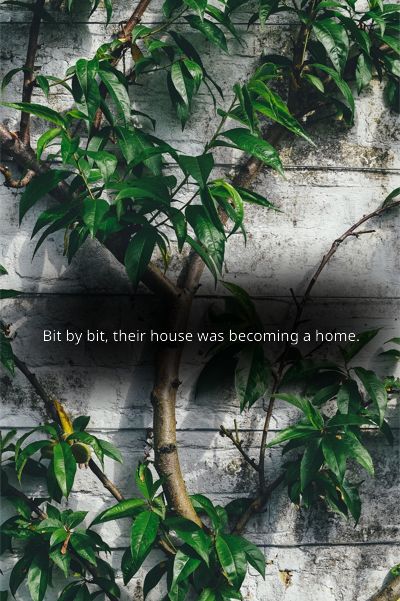Season content notes: Ableism

The invitation from the Silent Spinners wasn’t the last Chotaikytsai received. In fact, after that first gathering, Chotaikytsai received a new invitation every week or two. Most were from other threadcrafting families, hoping to cultivate a new potential member of their faction. But a few other families reached out as well.
The most supportive family was a farwalker family who claimed some relationship with Lefeng. Their elder told Chotaiktysai that they would have wished their distant-relative had joined them or another farwalker family, but since their relative was content to take up a town-dwelling life, they would support em.
A surprising supporter was the LightStep family, a messenger family who in times past had specialized in long-distance messages between towns and cities, but now were in direct competition with the QuickStride family who had rejected Kolchais. Their support wasn’t strong, but their grandparent was in favor of anything the QuickStride family was against.
Not all of the meetings were of political factions (or even officially political). Some were ‘family’ invitations, to celebrate a birth or a family memorial, which just happen to have a remarkable amount of politics going on.
Some of the invitations were what were called ‘and’ invitations. As in, ‘We invite the grandparent of the trial family and…’. Usually, Kolchais or Tsouchm came with em to those events, as the family members most familiar with town ways. But a few times ey brought Lefeng and once even Chestef. These meetings, Chotaikytsai found, were often about training the next generation who would sit on the council and laying the groundwork for future marriages, and the alliances they would bring.
Outside of their few supporters, Chotaikytsai quickly realized that most invitations were so others can gawk at em and eir family. Most of the family representatives who weren’t against them were on the fence, waiting to see how their presence would impact the existing families. Unfortunately, many reps were against them because they were new. They feared disrupting the balance of the city.
Ey continued to attend the weekly council meetings and watched how the politics of the private meetings played out in council. In time, ey found emself regularly discussing the politics with Kolchais, Kyawtchais, and Tsouchm.
A pattern emerged — most of the uncommitted families were low-status. They hoped that the new family would in some way shake up the politics of the city so the low-status families could advance.
High-status families almost invariably were antagonistic. They feared anything that might change the structure of the city. “They have forgotten how to ride the changing current, so they try to trap everyone in a world that doesn’t change,” Kolchais said with disgust. “They are killing the city.”
Paiokp, who had been sitting nearby but uninvolved, as usual lately, said, “That may be literal. The lightning column in the dock market is dangerously low. At best, it and the entire dock market are going to be light-twisted in the next lightning strike. At worst…”
“Inferno,” Chotaikytsai whispered.
Lefeng, trying to get her fingers wrapped around the needle they had started using to better control the thread, murmured, “There are other cities.”
Lefeng was not the only one practicing the new craft. With their new connections among the threadcrafting faction, Kolchais had been able to get multiple skeins of dyed thread on credit. Ey picked poorly died skeins with uneven colors. If the dye families were surprised that the new family would buy poor-quality yarn for their work, they said nothing, perhaps assuming the new family was trying to make their credit stretch as far as it could.
Or perhaps, Chotaikytsai thought, they remembered a time when the ColorworkWeavers had paid extra for vary-colored yarn they could use for their special patterns.
Paiokp and Chotaikytsai had picked up the new craft the quickest. They laid out a design for their first public piece — one meant to use vary-colored thread. A green circle in the middle, surrounded by blue. They hoped it would look like a forest surrounded by water. A gift to the temple, both as a thanks for the temple’s support and a marriage offering.
It used the simplest knot they had learned to make, repeated endlessly. All of them, even Chestef, were helping with it. Chestef only added a few knots, made under Paiokp’s guidance and the cutest look of intense concentration on eir face. Most of the work, though, was Paiokp’s who had proven to have a surprising amount of patience with the repetitive work.
Each midday, they all gathered in their work area and practiced their new craft. Lefeng and Tsouchm had the hardest time, neither of them being used to doing fine work. And both of them, Lefeng in particular, struggled with the amount of time they now sat each day. Lefeng, Chotaikytsai had noticed, now matched eir morning run with an evening run, to be able to sleep.
In the morning and afternoon, they continued work on the house, limewashing the walls, outside and in. Then, building the hearth and interior walls. They had agreed that most of the interior walls would only be half wattle-and-daub. Above that they will line hangings that can be pushed aside to allow air to circulate or closed to contain heat and give some privacy.
The one room that would be fully walled was the quiet room in the back corner. That was the first interior room to be finished. The walls went up quickly, though the daub took a while to dry. Then they lined the floor with rushes. Chotaikytsai wove the rush floor emself, three layers deep to give a comfortable seat and with sweet-smelling herbs woven threw it to keep out bugs and vermin.
Deciding what to do with the flooring of the rest of the house took time. Tsouchm and Lefeng had dug down and placed timbers with drilled holes in the ground to set the wattle into, but that only gave a foundation to the walls. The floor remained dirt.
Tsouchm, Lefeng, and Chestef spent a happy morning stopping and singing in the quiet room — making it very far from quiet — compressing the dirt down so there was a solid surface to lay the rushes over.
They needed to do something about the rest of the floor — the dirt got everywhere. Chotaikytsai could weave rushes for it all, but it would take time. Finally, they agreed to dip into their funds to buy mats for the rest of the building. As a weaving family, the RushFloors were technically part of the threadcrafting faction, though they didn’t work in thread. They also didn’t sell on credit, but they gave a good price and made it a rush job, turning out two layers for each of the two main rooms and one rough layer for the entry room within a week.
Lefeng then instituted a strict rule of no shoes past the entryway. Ey had no choice but to put up with the shit and rot out in the city. It would not come into their home, ey said.
Home, Chotaikytsai thought when ey said it and smiled. Bit by bit, their house was becoming a home.

Leave a Reply